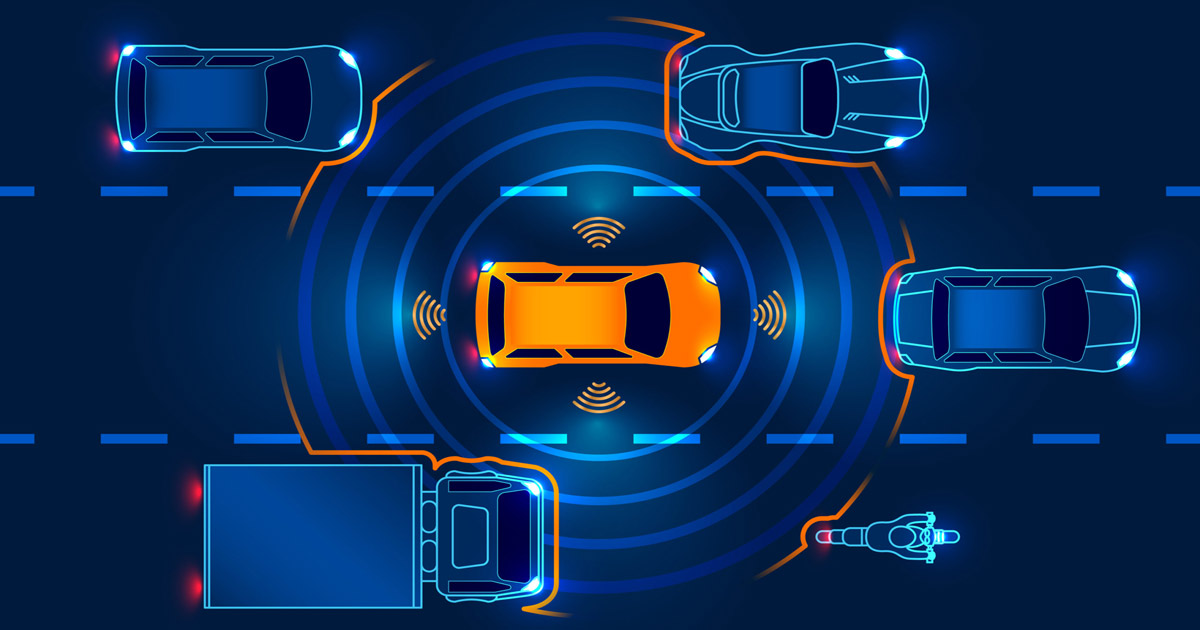If you have ever been to a car show or seen a classic car drive past you on the highway, you may have noticed that the car seats did not have headrests. In addition, seat belts were not introduced until the late 1960s, so if the vehicle was manufactured around that time, either it is not equipped with a seat belt or may only have a lap belt. As a result, if these vehicles are involved in a serious car accident, the driver and the other occupants of the vehicle will probably suffer serious injuries.
Over the past 60 years, car safety has improved by leaps and bounds, making today’s vehicles safer than ever. However, even with the advanced safety technology that is equipped in most new vehicles, the features cannot prevent a motorist from speeding, driving while distracted, or getting behind the wheel while under the influence of drugs or alcohol.
According to the U.S. Bureau of Transportation Statistics, the number of fatalities for every 100 million miles driven went from 4.7 in 1970 to 1.1 in 2019. This statistic is even more impressive when you consider the fact that there are considerably more cars on the roads today than there were 50 to 60 years ago. In fact, while the total number of miles driven has increased by over 370 percent, the rate of fatalities has gone down by close to 80 percent since 1960.
What Are Examples of Modern Life-Saving Car Safety Features?
While the National Highway Traffic Safety Administration (NHTSA) reported that approximately 38,680 died in motor vehicle accidents in 2020, that is significantly fewer than the number of car accident-related fatalities in 1970. Over the years, car manufacturers have developed a range of safety improvements that have made vehicles much safer and less likely to be involved in a fatal accident.
In addition, if an accident does occur, safety features like seat belts and airbags have been effective at preventing fatalities and reducing the severity of the injuries. The following are examples of the most significant safety improvements that have been made over the past 60 years:
- Three-point seat belts: Prior to the three-point seat belt, vehicles were only equipped with lap belts, which did not provide the degree of protection in the event of an accident. In 1960, the three-point seat belt was invented. The Y-shaped configuration of the three-point belt disperses the energy from the impact of a collision throughout the chest, pelvis, and shoulders. Volvo was actually the first car manufacturer to equip all of its vehicles with the three-point seat belt. As a result, car accident survival rates improved by 50 percent. In the United States, seat belts and padded dashboards became a standard feature by the late 1960s, although motorists did not take full advantage of these life saving devices until the 1990s.
- Airbags: In order for an airbag to deploy in the milliseconds that it takes for a motorist’s head to strike the steering wheel or the dashboard, it relies on a chemical reaction using sodium azide. This cushions the blow with an inflatable, pillow-like device that helps prevent injuries or reduces the severity of injuries caused by car accidents. In 1998, the United States government made it mandatory for all cars and trucks to be equipped with dual front airbags in the front seats. Many newer vehicles also offer side curtain airbags, but they are not required by law. According to the NHTSA, the combination of seat belts and airbags can reduce the chance of suffering a fatality from a head-on collision by over 60 percent.
- Backup cameras: These became a requirement in all new vehicles effective May 2018. They were designed to help motorists see the area directly behind the vehicle, and prevent backover collisions involving pedestrians, cyclists, and other vehicles. One criticism of backup cameras is that people often rely too heavily on them, which may limit their field of vision.
More Recent Developments
The following are examples of some recent developments in car safety technology:
- Anti-lock braking system (ABS): The ABS has mandatory in all new cars effective 2000. This system basically modulates the brake pressure in order to prevent the wheel from locking up. It helps the driver maintain control of the vehicle, and it stops the car as soon as possible.
- Tire pressure monitoring system (TPMS): Effective 2007, this has been mandatory in all cars, light trucks, and vans. It warns the driver when the tire pressure is low.
- Electronic stability control (ESC): This uses ABS sensors to keep the vehicle traveling in the direction that the driver is steering. It also uses extra sensors to measure sideways motion and steering angle, and it keeps the vehicle on the straight and narrow under regular driving conditions.
- Forward collision warning (FCW): This alerts the driver of an impending collision while traveling forward.
- Automatic emergency braking (AEB): If a forward collision is imminent, this provides a warning and automatically applies the brakes to prevent a collision or reduce the severity of the impact.
- Lane departure warning (LDW): If the vehicle starts to drift out of the lane, this will alert the driver.
- Lane keeping assist (LKA): This will actually assist the driver by steering the vehicle so that it stays within the lane markers.
- Blind spot warning (BSW): This will let the driver know when another vehicle is in their blind spot. The larger the vehicle, the larger the blind spots. Large commercial trucks have multiple blind spots that motorists should be aware of and avoid.
- Adaptive headlights: These are capable of adjusting the angle of the light based on the direction the steering wheel is turning. They can light the area to the right as you are making a left turn so that you have a better view of oncoming traffic when it is dark.
- Adaptive cruise control (ACC): This adjusts the vehicle’s speed in order to maintain a safe distance from the vehicle in front. Some ACC systems can come to a complete stop and continue with the flow of traffic.
- Lower Anchors and Tethers for Children (LATCH): This is a major improvement in automobile child car safety. A bar is installed under that seat cushion in the back seat. The anchor clips onto the bottom of the safety seat. The tethers clip onto the anchors that are built into the car seat. In addition to creating a more safe and secure seating for the child, the user-friendly installation process means that more people are likely to correctly install the seats.
What Are Other Significant Improvements to Today’s Vehicles?
In addition to the advanced safety features that most new vehicles are equipped with, the following improvements have been made over the years:
- Durability: Cars that were manufactured in the late 1960s and well into the 1970s did not last as long as today’s cars. In most cases, cars started to have major mechanical problems before reaching 100,000 miles. If well cared for and maintained regularly, today’s vehicles can last well over 100,000 miles.
- Functionality: Overall, newer cars function much better than older vehicles. Everything from power steering, ABS brakes, power windows, improved transmission, and better fuel economy make today’s vehicles more functional. They also provide more comfortable seating, temperature control, and a smoother ride.
- Entertainment: While older vehicles were equipped with a radio and possibly a cassette player, today’s cars can be hooked up to your phone, where you can access anything from music to podcasts to audio books.
It is also important to keep in mind that even among newer vehicles that are equipped with the latest safety features, some perform better than others in crash tests conducted by the NHTSA and the Insurance Institute for Highway Safety (IIHS). It is highly recommended that you check a vehicle’s safety rating before purchasing a new car.
Virginia Beach Car Accident Lawyers Can Help You After a Collision
Even though car safety has improved dramatically over the past 60 years, accidents still happen. If you have been injured in a collision, it is highly recommended that you contact one of our Virginia Beach car accident lawyers. Our legal team at East Coast Trial Lawyers will assist you with every step of the claims process. To schedule a free consultation, call us today at 757-352-2237 or contact us online. Located in Virginia Beach, we serve clients throughout Chesapeake, Eastern Shore, Hampton, Newport News, Norfolk, Portsmouth, and Suffolk, Virginia, as well as North Carolina and nationwide.


